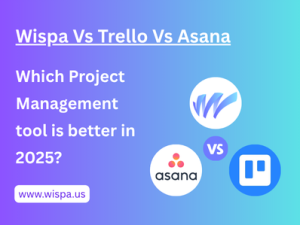
Best Project Management Software for Construction in 2025
Construction is one of the most complex undertakings in the modern economy. Whether it’s a skyscraper, highway, or housing complex, each project carries layers of interdependency- hundreds of contractors, thousands of tasks, shifting labor costs, and a fragile supply chain where even minor delays can set schedules back by weeks.
Uncertainty is built into every stage of delivery. A sudden scope change, an unexpected storm, or a regulatory inspection can undo months of planning in a single moment. The stakes could not be higher. In the U.S. alone, the construction market is valued at more than $2 trillion, where even a 1% shift in cost efficiency translates into billions of dollars gained or lost. And yet, despite the capital intensity of the industry, the execution gap remains glaring.
In 2025, construction firms can no longer afford “business as usual.” They need centralized management to survive in a market where clients demand transparency, regulators demand compliance, and investors demand efficiency. With the project management software market growing at a 13% CAGR through 2030, leaders now have countless options. But which one is best for you?
In this article, we’ll analyse the top project management software for construction in 2025 that can give your teams a powerful edge.
The Unique Challenges of Construction Project Management
Unlike many industries, construction faces a distinct set of hurdles that make effective management particularly difficult.
1. Resistance to Technology and a Skills Gap
In construction,digital transformation is painfully slow. While industries like finance and logistics integrated cloud-based solutions a decade ago, construction is still wrestling with paper-driven workflows and Excel spreadsheets passed across departments.
But the main challenge here isn’t lack of technology, it’s adoption. A large number of construction firms cite lack of skilled staff as the biggest barrier to using project management tools. Leaders hesitate to invest in software because teams may not adapt, while teams remain under-skilled.
2. Fragmentation and Siloed Data
Construction projects are notorious for fragmentation. Architects, contractors, subcontractors, and consultants often work on different systems that don’t talk to each other. Budgets sit in one place, timelines in another, contracts in email threads, and compliance files in binders.
This scattered approach leaves managers working with outdated information while costs and schedules drift off track. By the time issues come to light, delays and overruns are almost certain. Without a single source of truth, coordination remains one of the industry’s biggest challenges in construction management.
3. Stagnant Productivity Despite Rising Complexity
Even as projects grow larger and more complex, smart cities, high-rises, sustainable builds, productivity tools in construction has barely moved in 20 years. Manual approvals and email-heavy processes still dominate, with teams wasting hours on approvals, updates, and design clarifications.
While tools exist to automate routine processes, most firms continue to rely on human patchwork, which increases risk and drains efficiency.
4. Chronic Budget Overruns and Schedule Slippages
In construction, budget and schedule overruns are not exceptions, they are the norm. Nine out of ten projects exceed budgets, often by double digits, caused by poor forecasting, rising material costs, labor shortages, and scope creep.
Delays only make it worse, where a two-week slip on a $50 million job can add over $1 million in extra costs. Without real-time visibility into spending and schedules, managers stay reactive instead of preventing problems early.
5. Communication Gaps Across Distributed Teams
Today’s construction workforce is spread across offices, job sites, and subcontractor networks, all relying on the same critical information. Yet updates still flow through phone calls, WhatsApp chats, and endless email chains.
This creates dangerous misalignment. A contractor may be working on an outdated drawing because the revised blueprint never reached the field team on time. Miscommunication not only increases costs but can compromise safety and compliance.
6. Regulatory and Compliance Pressure
Compliance is another persistent pain point. Every construction project must navigate zoning laws, labor codes, safety rules, and environmental regulations, constantly shifting across regions. The paperwork is heavy, and without digital systems, many firms still track inspections and approvals in scattered folders.
The cost of non-compliance can be devastating, ranging from heavy fines and stalled projects to full legal liability if accidents occur.
Biggest Construction Management Challenges
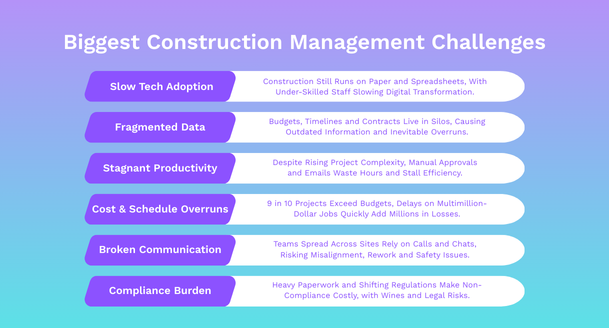
After carefully reviewing dozens of project management platforms and testing their features, here is a list of 15 best tools that strike the right balance of usability, functionality, and value. These platforms help construction businesses tackle their biggest challenges with ease.
How Project Management Software Transforms Construction Projects?
In an industry where even a two-day delay in material delivery can ripple into weeks of setbacks, project management software has become a necessity rather than a choice. Here’s what a reliable tool offers:
Centralization as the Foundation
The most valuable contribution of construction-focused project management software is centralization. A well-implemented platform becomes the single source of truth, bringing together g budgets, schedules, communications, and compliance into a single, unified platform.
Instead of chasing scattered spreadsheets and email threads, managers gain real-time visibility that allows them to identify risks before they spiral into costly delays.
Efficiency Through Automation
Administrative work often drains valuable site hours. With project management software, automation takes over repetitive tasks. Approvals, daily progress reports, and schedule updates that once consumed hours are now handled instantly, reducing errors and freeing teams to focus on execution rather than paperwork.
This automation not only standardizes workflows but also ensures consistency across projects, a critical need in an industry where inconsistent reporting often derails timelines.
Collaboration Across Roles and Locations
Construction projects are multi-stakeholder ecosystems. Engineers, architects, contractors, subcontractors, and clients often work from different systems, or worse, different versions of the same document.
A shared hub ensures that drawings, updates, and field inputs remain aligned, with mobile apps enabling site teams to upload progress instantly. This transparency cuts rework and eliminates the miscommunication that often plagues distributed teams.
Cost and Resource Discipline
As mentioned earlier, Budget overruns are common in construction. Software helps shift the industry from reactive to proactive financial control.Real-time budget alerts flag deviations before they spiral, while dashboards monitor equipment use, labor allocation, and subcontractor performance.
Predictive analytics go a step further, highlighting risks like rising material costs or labor shortages early enough for leaders to act.
Compliance Confidence
Construction projects must adhere to OSHA safety standards, local zoning laws, labor codes, and environmental regulations, all of which differ regionally. With project management software, compliance shifts from manual chaos to digital certainty:
Secure, cloud-based document storage with role-based access ensures every inspection report and certification is audit-ready. Automated reminders flag upcoming license renewals, safety checks, or permit deadlines.
Data-Driven Insights for Smarter Decisions
Finally, a good project management software turns raw project data into actionable intelligence. With custom dashboards and analytics, leaders track KPIs like cost variance and schedule performance, run predictive risk models, and measure productivity across phases and teams.
With the right support, decisions are no longer guesswork, they are guided by accurate, real-time intelligence.
The 14 Best Project Management Tools
- Wispa – Modern all-in-one hub for construction workflows.
- Contractor Foreman – Budget-friendly choice for small contractors.
- Zoho Projects – Works best for teams in the Zoho ecosystem.
- Teamwork – Collaboration tool for multi-stakeholder projects.
- ProjectManager – Flexible option for general project planning.
- Wrike – Customizable platform for large enterprises.
- Jira – Agile-focused, suited for hybrid tech teams.
- Monday.com – Visual and simple for small contractors.
- Procore – Enterprise-grade tool trusted across construction.
- ClickUp – All-in-one workspace for mid-size firms.
- Smartsheet – Spreadsheet-style management tool.
- Asana – Clean, task-driven platform for small teams.
- ProofHub – Centralized approvals and collaboration space.
- Sage 300 – Finance-first system with strong accounting.
Quick Guide to Construction Project Management Software
| Software | Strengths | Weaknesses | Ideal For |
|---|---|---|---|
| Wispa | Unlimited free users, 21+ integrated features, centralized inbox, compliance-ready storage, real-time dashboards, affordable scaling, onboarding support. | Newer tool with limited brand awareness, offline support needs improvement, advanced AI still rolling out, fewer third-party templates. | Small-to-large firms needing all-in-one hubs, compliance, and unlimited-user affordability. |
| Contractor Foreman | Strong estimating, scheduling, invoicing, budgeting, mobile-friendly. | Limited automation, few integrations, basic reporting, less centralized collaboration. | Small to mid-size contractors focused on cost control and billing. |
| Zoho Projects | Gantt charts, task tracking, affordable pricing, part of Zoho ecosystem, good time-tracking. | Steep learning curve, limited offline use, less intuitive dashboards, slow support. | Teams already using Zoho, budget-conscious small businesses. |
| Teamwork.com | Task & time management, file sharing, intuitive timelines, client collaboration. | Lacks construction-specific features, weak cost control, no compliance tracking. | Agencies managing subcontractors, mid-size project teams. |
| ProjectManager | Planning, tracking, real-time reporting, Gantt & Kanban views, flexible pricing. | Limited integrations, weak budgeting & document control, not construction-focused. | General project teams needing real-time reporting. |
| Wrike | Customizable workflows, task automation, strong integrations, scalable. | Complex for small teams, expensive advanced features, training required, limited offline use. | Large, tech-savvy enterprises needing workflow customization. |
| Jira | Agile tracking, robust reporting, global adoption, strong dev integrations. | Not construction-focused, complex for non-tech teams, weak budgeting & document tools. | Tech-heavy firms blending IT and construction workflows. |
| Monday.com | Highly visual dashboards, task automation, strong integrations, easy adoption. | Expensive at scale, weak compliance, over-customization risk, not construction-focused. | Startups or small contractors wanting visual task tracking. |
| Procore | Construction-specific, strong field tracking, compliance tools, enterprise integrations. | Expensive, steep learning curve, overwhelming for non-specialists, best features locked in higher plans. | Large enterprises needing deep field management and compliance. |
| ClickUp | Custom dashboards, collaboration, affordable, wide integrations, time-tracking. | Over-customization, steep learning curve, weak compliance, performance issues with large data. | Mid-size businesses seeking all-in-one collaboration. |
| Smartsheet | Spreadsheet-like familiarity, resource management, flexible templates, good reporting. | Outdated UI, limited automation, weak compliance, lacks deep construction features. | Teams transitioning from Excel, resource-focused managers. |
| Asana | Clean UI, timelines, team collaboration, easy adoption, free plan for small teams. | Weak budgeting, limited reporting, no construction focus, weak document/compliance tools. | Small creative/design teams, contractors wanting simplicity. |
| ProofHub | Proofing tools, task & milestone tracking, flat pricing, built-in file sharing. | Limited scalability, weak compliance, basic analytics, few integrations. | Small firms focused on design approval workflows. |
| Sage 300 | Strong accounting, payroll, HR, robust reporting, compliance features. | Outdated UI, training-heavy, limited collaboration, costly setup, not user-friendly. | Finance-heavy construction enterprises. |
Top 14 Project Management Platforms for Construction (in Detail)
1. Wispa – The All-in-One Command Center
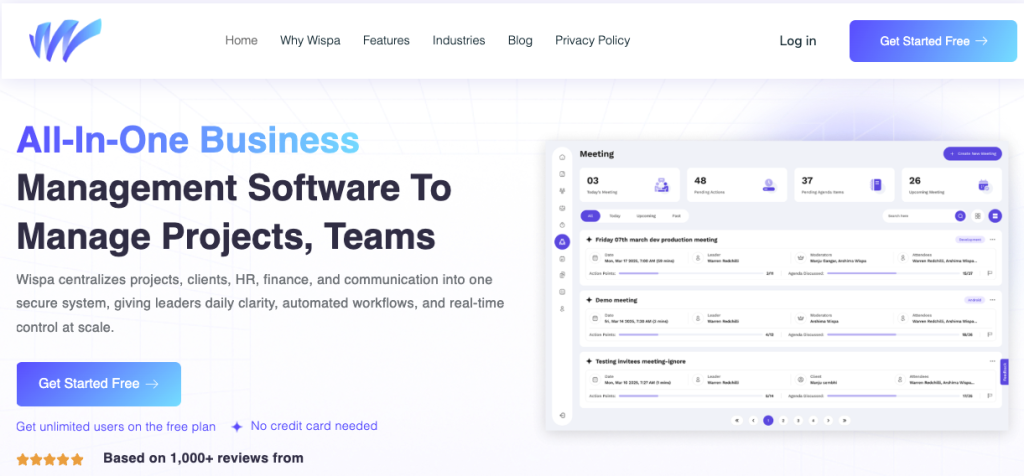
Wispa has quickly positioned itself as a centralized control hub designed to tackle the industry’s deepest pain points. Unlike traditional construction platforms that focus narrowly on field operations or budgeting, Wispa integrates 21+ tools into one environment. Its centralized inbox addresses the communication chaos most firms face, capturing emails, chats, and notifications in one searchable space.
For construction managers battling fragmented workflows, Wispa stands out by offering unlimited free users, a critical feature when projects involve dozens of subcontractors. Compliance tracking, real-time dashboards, automated workflows, and integrations with HR, finance, and CRM systems make it more versatile than competitors like Procore or Contractor Foreman. Its biggest strength lies in accessibility: with a long 3-month trial and a simple interface, Wispa bridges the skills gap that keeps many firms from fully adopting technology.
Where it still lags is in construction-specialized micro-features like advanced field inspection tools. Yet for most firms looking for clarity and control at scale, Wispa is emerging as the most future-proof option in 2025.
2. Contractor Foreman – Budget-Friendly but Limited

Contractor Foreman markets itself as an affordable construction-specific tool, with strong estimating and scheduling features that appeal to small contractors. It includes invoicing and budgeting, which help firms struggling with financial oversight.
However, its limitations show quickly in complex projects. Automation is minimal, data silos persist, and collaboration tools remain disjointed. This makes it less effective for firms dealing with distributed teams and real-time communication needs. In 2025, Contractor Foreman is ideal for cost-sensitive small firms managing a handful of projects, but it struggles to keep pace with the data centralization and automation requirements of larger contractors.
3. Zoho Projects – Strong Ecosystem, Steep Learning Curve
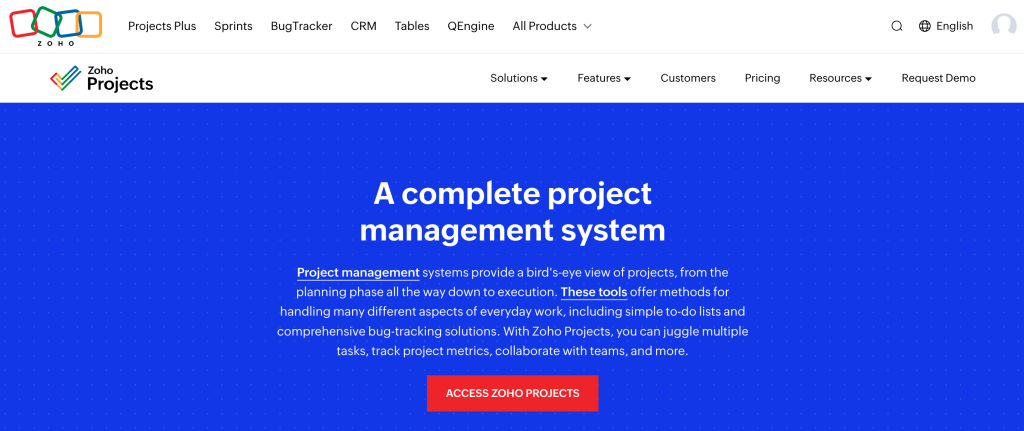
Zoho Projects shines for teams already invested in the Zoho ecosystem. Its Gantt charts and integration capabilities help manage tasks with clarity, while the low entry cost appeals to budget-conscious firms.
That said, construction-specific needs aren’t its priority. Compliance documentation, subcontractor workflows, and complex scheduling aren’t handled with the depth the industry demands. Add to this a steep learning curve and slower support, and Zoho becomes best suited for small, tech-comfortable firms that already run on Zoho apps rather than those seeking a specialized construction solution.
4. Teamwork.com – Agency DNA, Limited for Construction
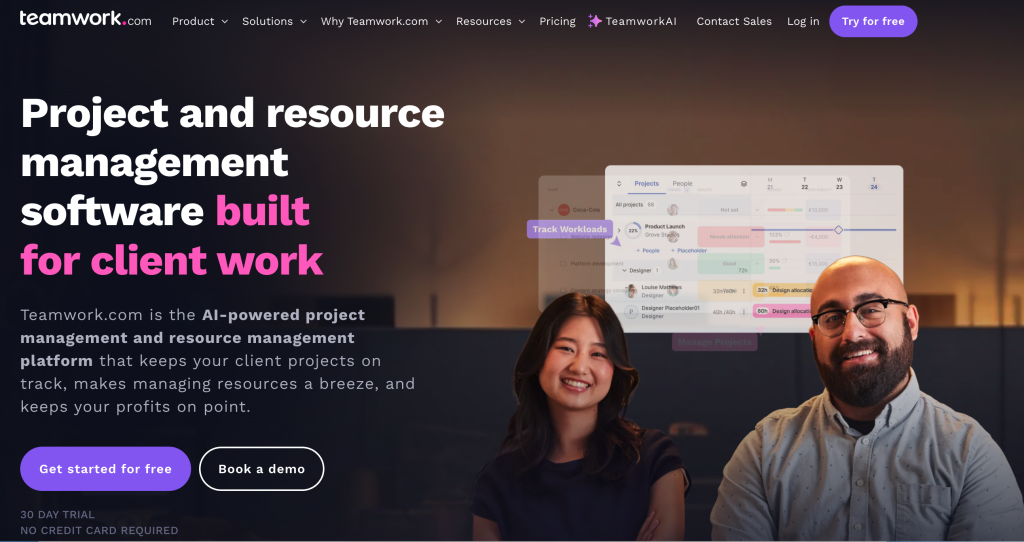
Originally designed for creative agencies, Teamwork.com emphasizes task management, file sharing, and time tracking. Its collaboration tools can help mid-size contractors handle subcontractors more efficiently.
But the limitations in construction workflows are clear. Budget management is shallow, compliance features are absent, and customization is limited. For construction firms battling cost overruns or heavy regulatory oversight, Teamwork is not robust enough. It works best for project managers handling client-facing communication, but not as the central hub for large construction projects.
5. ProjectManager – Flexible but Generic
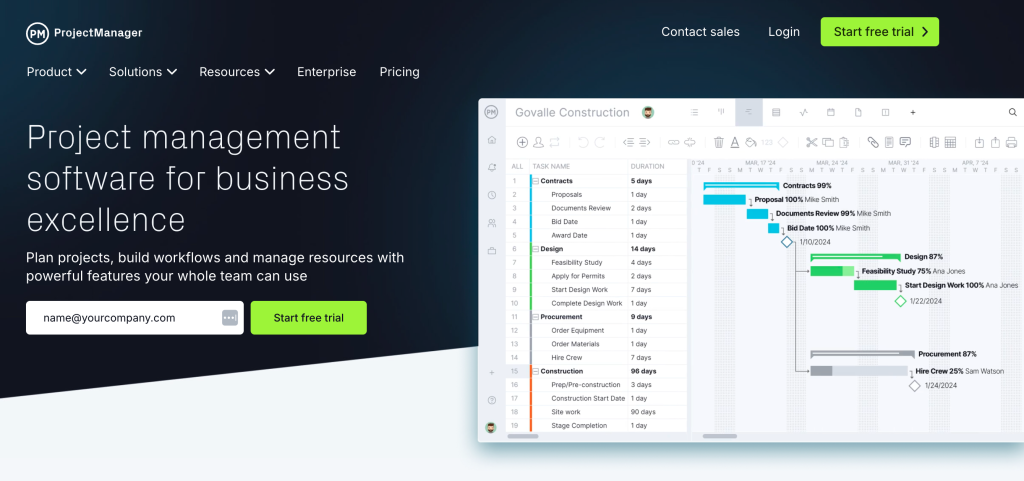
ProjectManager offers real-time planning and tracking with flexible views like Gantt and Kanban. Its reporting is stronger than some competitors, giving managers a snapshot of project health.
Yet it suffers from being too generic. Construction projects require field-ready tools, compliance document storage, and budget-specific workflows, all areas where ProjectManager falls short. It suits general project teams but forces construction managers to supplement with external tools, perpetuating the very fragmentation problem they are trying to solve.
6. Wrike – Customization Power, Adoption Challenge
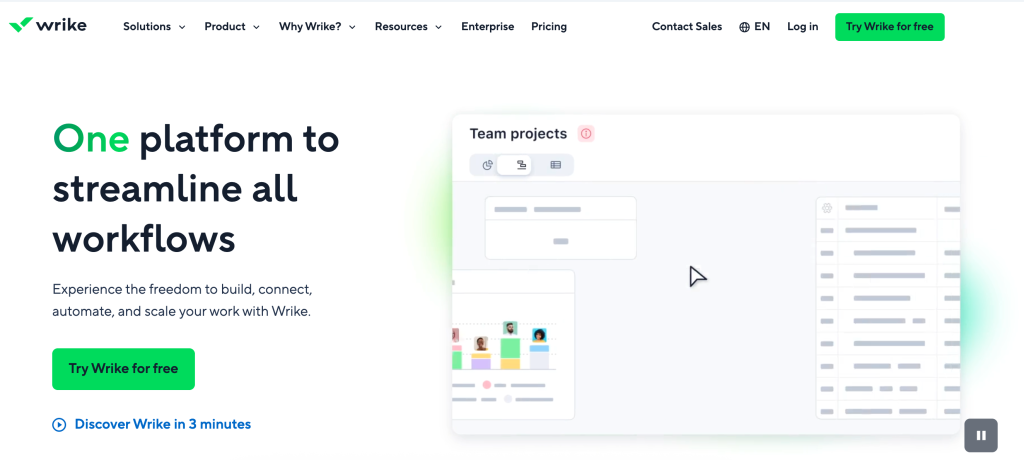
Wrike is known for its high customization and workflow automation, which can theoretically solve many productivity struggles in construction. Large enterprises with IT support often adopt Wrike for its integrations.
However, Wrike’s complexity is its weakness. Construction teams, already battling resistance to tech, often find Wrike overwhelming. Training requirements are steep, and its compliance and field features remain underdeveloped. In 2025, Wrike works for large, tech-savvy firms with dedicated digital transformation teams, but it’s impractical for smaller contractors.
7. Jira – Agile DNA, Poor Construction Fit
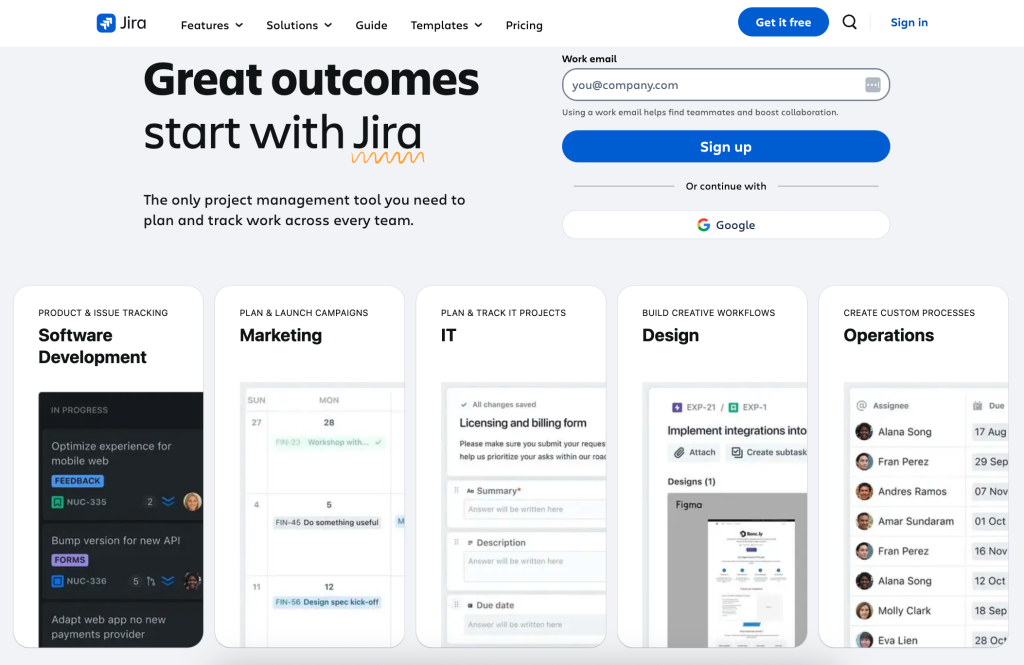
Jira excels in issue tracking and agile workflows, making it indispensable in software development. Some construction-tech hybrids attempt to use it for task tracking.
The problem? Construction isn’t agile software development. Jira lacks financial tools, compliance management, and intuitive document handling. It creates friction for teams already battling silos and communication gaps. While it works for tech-heavy firms integrating IT and construction, most contractors will find Jira misaligned with their needs.
8. Monday.com – Visual Simplicity, Scaling Problem
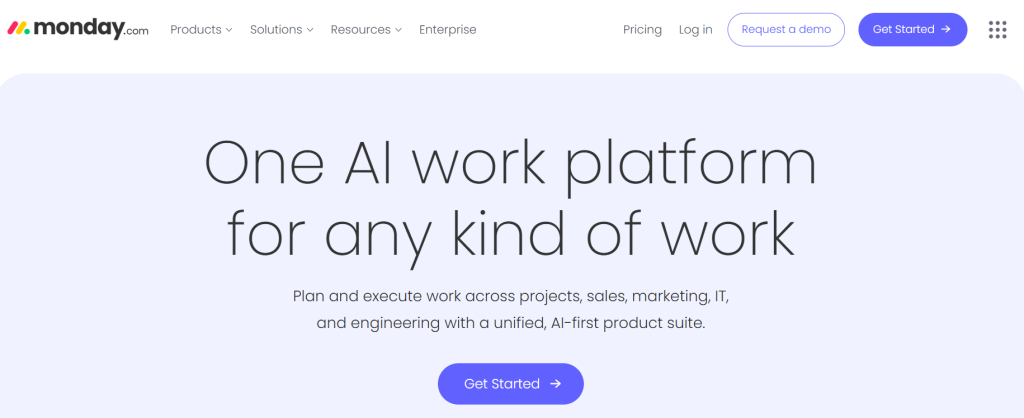
Monday.com is highly visual, with colorful dashboards and intuitive task boards. Its automation and integrations help smaller teams move faster, making it attractive for startups or small contractors.
But costs balloon quickly as teams grow, and construction-specific needs like document compliance and subcontractor workflows remain weak. For firms beyond small-scale builds, Monday.com risks becoming another fragmented layer rather than a comprehensive hub.
9. Procore – Field Giant, Enterprise Price Tag
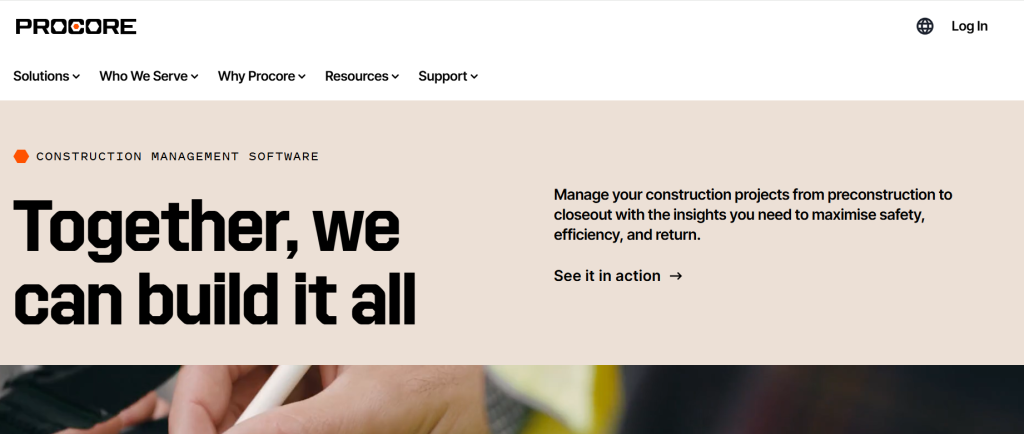
Procore is one of the most recognized names in construction software, with deep field tracking and compliance features. Large contractors trust it for complex projects where site visibility is paramount.
However, its enterprise pricing locks out small and mid-size firms. Adoption also requires heavy training, making it impractical for teams already struggling with resistance to technology. Procore is best suited for large enterprises with field-heavy operations, but its complexity makes it less appealing for smaller, agile contractors.
10. ClickUp – Customization at Scale
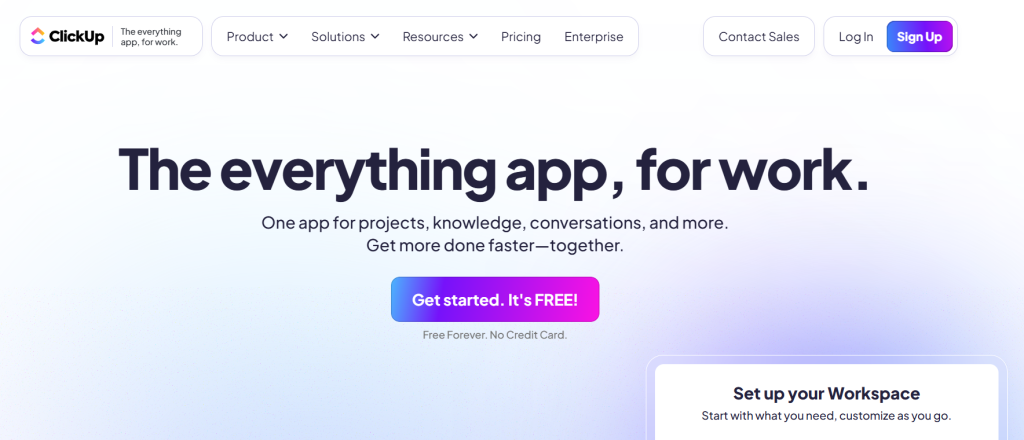
ClickUp markets itself as an “all-in-one” alternative, offering customizable dashboards and integrated collaboration. Its affordability and integrations make it attractive to mid-size firms.
But with over-customization risks and compliance weaknesses, construction firms often find themselves spending more time building workflows than actually managing projects. For firms seeking a flexible tool without specialized needs, ClickUp works. For compliance-heavy construction projects, it falls short.
11. Smartsheet – Spreadsheet Familiarity, Innovation Gap
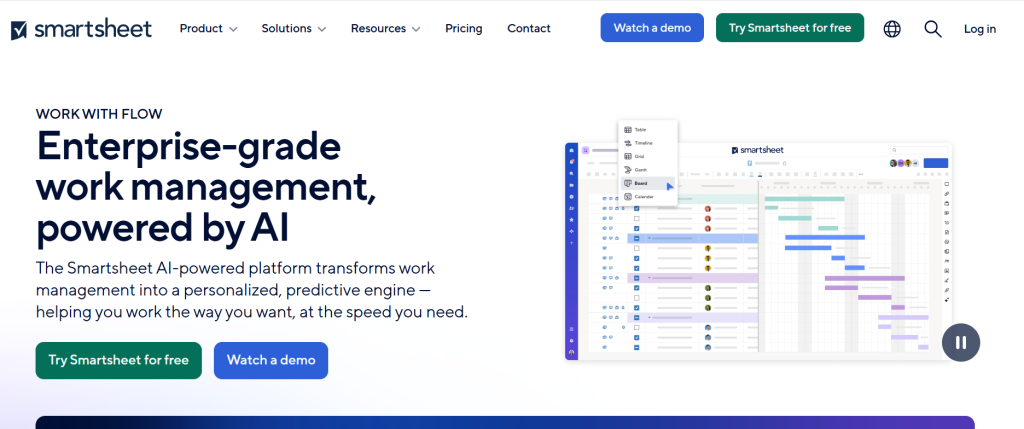
Smartsheet appeals to managers transitioning from Excel. Its spreadsheet-style interface makes resource management simple, and templates help with quick setup.
Yet its UI feels dated, automation is minimal, and compliance features are weak. Construction teams needing real-time decision-making often outgrow Smartsheet quickly. It works best for managers comfortable with spreadsheets, but it lacks the innovation needed for today’s complex builds.
12. Asana – Clean but Basic
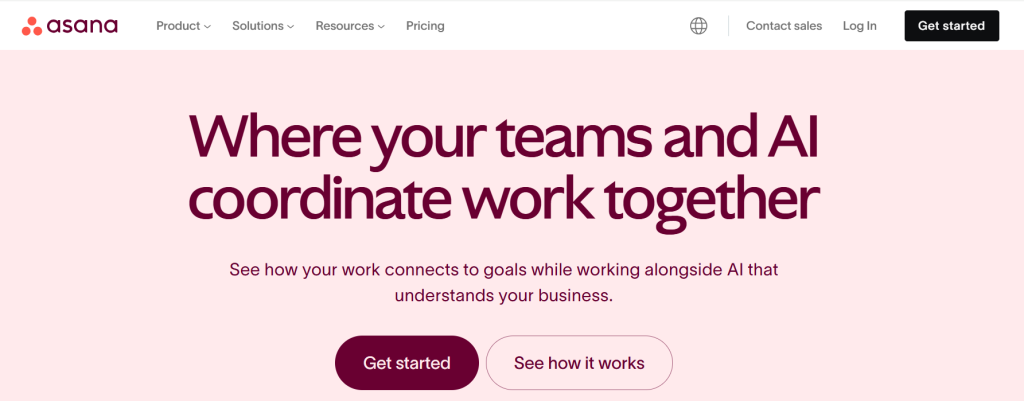
Asana offers a clean, intuitive interface with timelines and task organization. Its ease of use makes it popular among small, non-technical teams.
But for construction, its weaknesses are glaring. Budgeting, compliance, and document management are nearly absent, leaving firms dependent on supplementary tools. Asana suits creative or design teams within construction firms, but it cannot be the backbone of major projects.
13. ProofHub – Niche for Approvals, Weak Beyond

ProofHub’s standout feature is file proofing, which helps teams managing design-heavy deliverables. It also supports task tracking and collaboration.
Yet it struggles to scale, lacks compliance features, and offers minimal integrations. ProofHub works for teams where design and approvals dominate, but as a central construction platform, it is too limited.
14. Sage 300 – Finance First, Collaboration Last
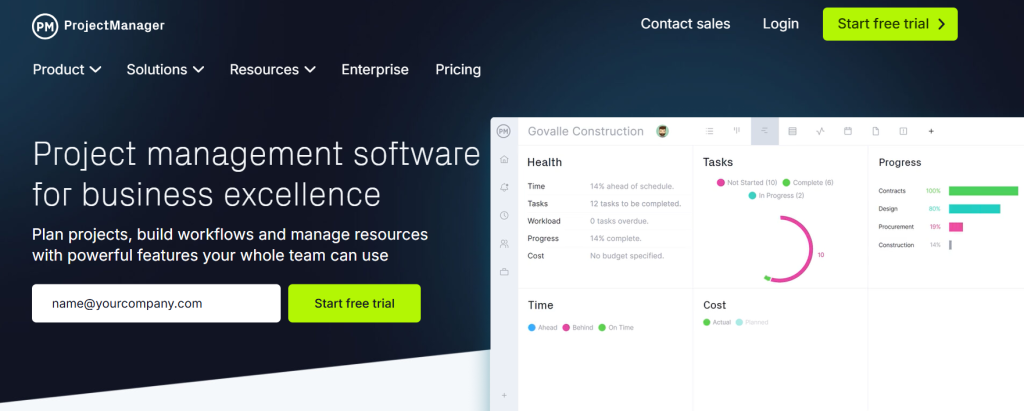
Sage 300 remains strong in accounting and payroll, making it popular in finance-heavy industries. Its compliance features are also robust.
But the UI feels outdated, collaboration tools are minimal, and adoption is training-intensive. For construction firms where finance integration outweighs collaboration, Sage 300 works. For day-to-day site management, it is cumbersome.
How to Choose the Right Software for Your Construction Business
Selecting project management software isn’t just about buying a tool, it’s about changing how your business will operate, communicate, and grow in the years ahead. With so many options available, the process can feel overwhelming. Here’s a structured way to approach it:
Step 1: Assess Needs
Every construction business faces its own set of challenges. Firms should identify whether they need support for large-scale projects, subcontractor management, or compliance-heavy workflows. The right software simplifies this step through custom onboarding tailored to industry needs.
Step 2: Compare Features
When evaluating options, features such as scheduling, cost control, communication, and reporting should be prioritized. The most effective platforms combine these into one hub, reducing the hassle of switching between apps or chasing scattered updates.
Step Three: Think About Scalability
Growth is inevitable in construction, and your software should grow with you. Look for platforms that let you add more users and projects without adding complexity, or surprise costs, down the line.
Step Four: Check What Others Say
User reviews often tell you what sales brochures don’t. Platforms trusted by a broad base of companies, and backed by consistent positive feedback, tend to deliver on reliability and support.
Step Five: Try Before You Commit
Free trials aren’t just about testing buttons, they’re your chance to see if the platform feels natural for your teams. A longer trial window is always better, giving you time to run it through real project scenarios.
The Future of Construction Project Management
The construction industry has reached a defining moment. Projects are bigger, risks are higher, and efficiency is no longer optional. Firms that continue relying on fragmented systems and manual processes will find it increasingly difficult to meet the demands of modern projects, while those that embrace smarter, integrated solutions will set the pace.
Among the many choices available today, Wispa reflects this shift especially well. With its scalable design, unlimited user access, and feature-rich environment, it offers firms the clarity and control needed to navigate growing project demands.
Start your free 3-month trial today and see how streamlined construction management can be.
Frequently Asked Questions
It’s a digital platform that brings together everything a construction team needs, tasks, budgets, timelines, documents, and communication, so projects run smoothly from start to finish.
The 7 C’s of project management are Clarity, Consistency, Communication, Commitment, Competence, Creativity, and Courage. These principles help teams stay organized, aligned, and focused on delivering results. Modern tools like Wispa make it easier to follow the 7 C’s by providing clear task assignments, consistent workflows, real-time communication, and automation—so teams can manage projects smoothly from start to finish.
Jira is often considered the most used project management software worldwide, especially among tech and agile teams. However, many small and growing businesses now prefer modern, all-in-one tools like Wispa because it simplifies workflows, automates routine tasks, and unifies communication—making it a strong alternative to traditional PM platforms.
Wispa is one of the best software options for construction because it brings all tasks, communication, files, and approvals into one easy-to-use platform—perfect for small to mid-sized contractors who want to eliminate manual work. Other popular choices include Procore for large commercial projects, Buildertrend for residential builders, Fieldwire for on-site coordination, and Autodesk Construction Cloud for teams needing design/BIM integration. The best software depends on your project size and workflow needs, but Wispa stands out for its simplicity, affordability, and all-in-one workflow automation.
Small construction businesses need dedicated software because it helps them stay organized, efficient, and competitive—even with limited staff and resources. Manual methods like spreadsheets, paper notes, or WhatsApp messages often lead to delays, miscommunication, and costly mistakes. Construction software centralizes everything so teams can work smarter, not harder.
There isn’t a single “one-size-fits-all” answer — it depends on the size of your company, project complexity, and the features you need. But among the widely used and highly rated platforms today, the following stand out (in no particular order):
Wispa – A modern all-in-one business management software for construction workflows. It offers project & task management, document sharing, dashboards, collaboration tools and reporting — making it a solid choice for firms wanting a unified, easy-to-use system.
Procore – A top choice for enterprise-level construction projects. Procore covers full project lifecycles: scheduling, budgeting, document control, field management and more. It’s widely trusted by large contractors for complex builds.
Buildertrend – Popular with residential contractors and small-to-mid-size construction firms for its ease of use, scheduling and client-communication features.
Fieldwire – Used for coordination on field sites, task assignments, plan viewing — especially effective for on-site teams needing mobile access and real-time updates.
Smartsheet – A flexible, spreadsheet-style management & collaboration tool. While not strictly “construction-only,” many smaller firms or teams appreciate its simplicity, automation, and document/task tracking capabilities.


